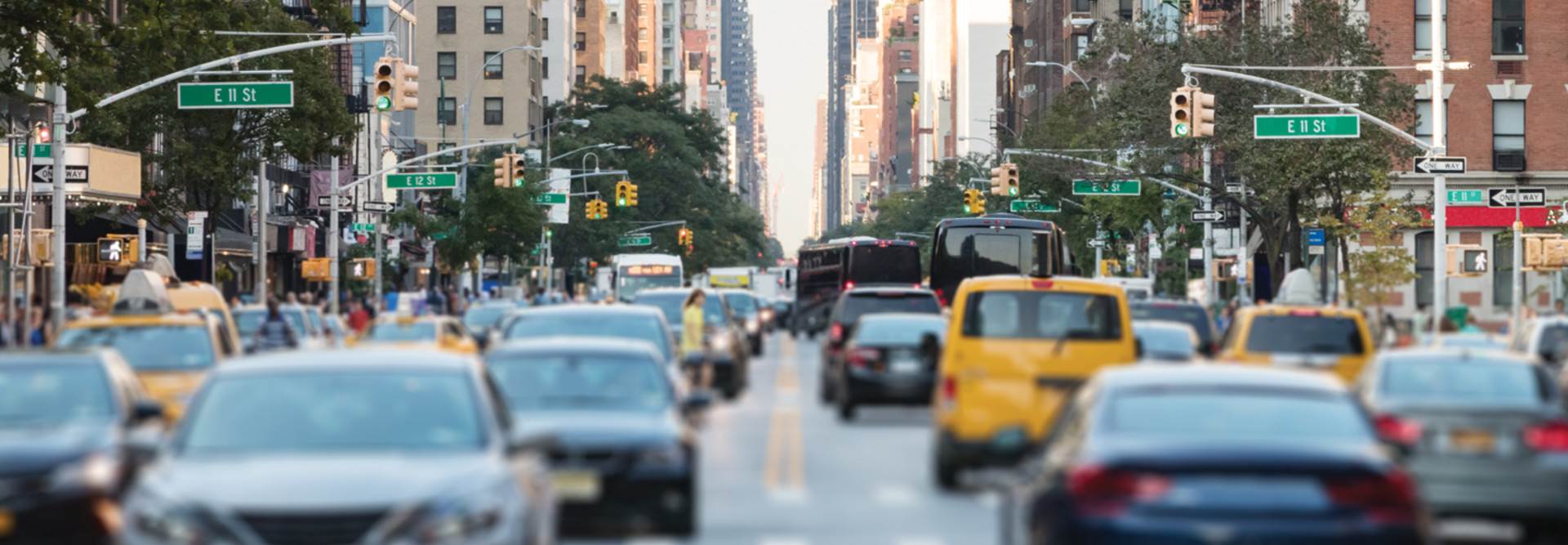How Smart Cities Can Benefit from Vehicle Data
As these use cases are integrated into smart city design, they create limitless opportunities for more efficient government services, job creation, revenue realization and improved quality of life.
Let’s take a closer look.
1. Intelligent Traffic Monitoring: A staggering 43 percent of public roadways are in poor or mediocre condition, a number that has remained stagnant over the years. It is a pressing challenge that urban planners must address.
Typically, they do this by outsourcing traffic studies to third parties who evaluate road performance and calculate how efficiently traffic is moving. But these point-in-time studies do not factor in evolving traffic conditions.
When intelligent roadway technology is deployed around a city’s transportation network, planners can conduct these studies independently and continuously. They can monitor traffic flow over time, analyze vehicle congestion patterns and gauge average estimated vehicle tonnage by area — all from a single hub.
Using these insights, they can make real-time, data-driven decisions about how best to manage traffic flow and inform future roadway improvements, such as resurfacing and the placement of roundabouts and lights.
2. Green Transportation: Advanced vehicle recognition technology can be a key enabler of many of the environmental targets outlined in the Biden administration’s plan. Sensors connected to AI and machine learning algorithms can determine vehicle emission levels based on the specifications of each vehicle on the roads. They can also gauge air pollution, greenhouse gas and fuel efficiency scores by location. This powerful data can be used to design policy and infrastructure that reduces air pollution and promotes sustainable transit alternatives.
These innovations also help cities meet the White House’s goal of winning the electric vehicle market. Smart city planners can analyze the real-world movement of EVs, including hot spots and charging behavior. With these insights, they can determine the optimal placement and hours of operation for charging stations, or where to establish “green corridors” exclusively for EVs.
MORE FROM STATETECH: Find out how Columbus, Ohio, is moving ahead on its smart mobility plans.
3. Smart Parking: Smart parking is a critical part of any smart city framework. It can help close revenue gaps, optimize parking management and enforcement practices, and improve the visitor experience.
Real-time intelligence derived from sensors located in parking areas can identify vehicles as they enter a location and set in motion any number of smart parking actions. Parking managers and law enforcement can verify prepaid and monthly parking, match vehicles to whitelists or blacklists, and streamline the fragmented workflows and systems involved in permit issuance, payments, reporting, citations and more. Data captured by these systems can also be used to optimize occupancy planning and management.
4. Improved Public Safety: A central goal of the American Jobs Plan is to fix all roadways “with safety, resilience, and all users in mind.” To achieve this, the plan proposed $20 billion to fund state and local “vision zero” plans and other improvements to reduce crashes and fatalities.
Advanced vehicle recognition systems can be quickly put to work to achieve these goals, placing lifesaving data into the hands of city officials in real time. The technology can detect and alert authorities of unsafe roadway conditions, such as hazardous weather, dangerous speeders and wrong-way drivers. If a vehicle is the subject of a criminal investigation or connected to an Amber Alert or Silver Alert, it can be quickly located and intercepted by law enforcement.
DIVE DEEPER: Find out why these smart cities are the ones to watch.
Building Smart Cities That Make the Grade
We are at a critical juncture. The American Jobs Plan provides the resources to help America make the infrastructure grade. However, our infrastructure is more interconnected than ever before, and we must utilize new approaches and technologies to make progress toward greener and smarter cities.
As transportation and safety evolve as fundamental, must-have components of smart cities, roadway intelligence derived from vehicle recognition technology can be the jumping-off point for cities looking to build safer, greener, more resilient infrastructure.











